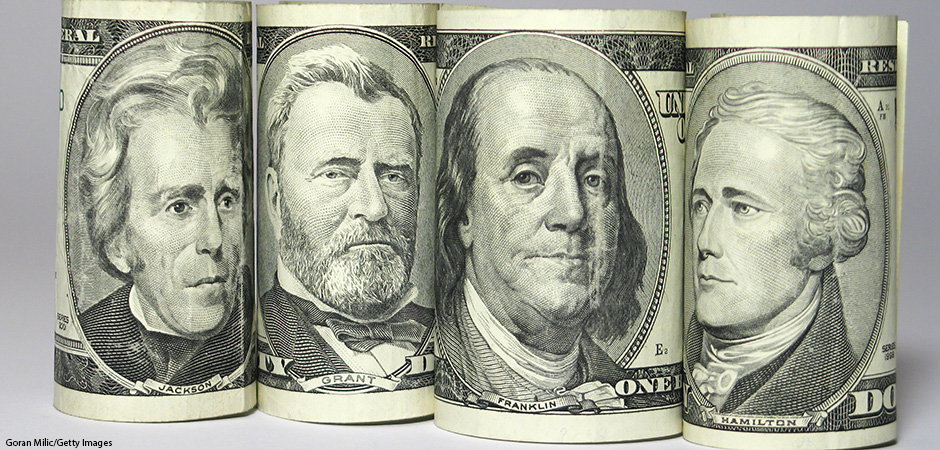
In 2023, an estimated 8.4 million American workers will see a raise in their hourly pay. This is because 23 states and Washington, D.C., are increasing their minimum wage. The raises range from an additional 23 cents per hour in Michigan to $1.50 per hour in Nebraska. Twenty-seven cities and counties are also increasing their minimum wage. Many of the new raises went into effect on January 1, 2023. Others will go into effect later this year.
Twenty states will continue to follow the federal minimum wage of $7.25 per hour, last increased in 2009. The locations raising their minimum wage above the federal minimum wage are responding to high inflation that is increasing the costs of everyday items such as food, transportation, and housing. They are also responding to organized efforts by workers and labor groups to reduce the difference in income between those who earn the most and the least. This is known as the wealth gap. After the new increases, Washington state will have the highest state minimum wage at $15.74 per hour. When the last wage increases go into effect, 30 states; Washington, D.C.; and 46 localities will have a higher minimum wage than the federal minimum wage.
A Brief History of the Federal Minimum Wage
Minimum wage protection has not always existed. Americans did not benefit from this federal regulation until Congress passed the Fair Labor Standards Act (FLSA) in 1938. The first female Secretary of Labor, Frances Perkins, advocated for this law. It was the last major New Deal policy of the Great Depression era. The FLSA promoted better labor conditions to maintain a standard of living necessary for the health and well-being of workers. It established minimum wage, overtime pay, recordkeeping, and youth employment rules. When the FLSA was introduced, the federal minimum wage was 25 cents per hour. Through congressional action, the federal minimum wage has increased over time.
Why Are Increases Happening?
Although the federal minimum wage is $7.25 per hour, many states and localities require employers to pay workers a higher minimum wage in their areas. This is because the cost of living typically increases and it varies by place. Overall, the federal minimum wage has not kept pace with rising costs. Therefore, the federal minimum wage’s value has steadily decreased. For example, in 1968, the federal minimum wage was worth $12.12 in today’s dollars. In 2009, it was worth $9.99. In 2022, it was worth $7.25. This means that workers can afford less, despite working the same number of hours. This past summer, the purchasing power of the federal minimum wage reached its lowest level in 66 years. Due to inflation hitting a 40-year high and the economic instability created by the COVID-19 pandemic, many people have struggled financially. Because of these conditions, labor movement activity has increased. As a result, some large corporations have acted. For example, Walmart, Target, Costco, McDonald’s, and Starbucks have raised their minimum wage in the past few years. Many states and localities have also passed laws to increase their minimum wage, rather than leave the decision up to the federal government or private businesses.
To help protect the economic stability of their lowest paid workers, places are using different tools to create the 2023 increases. Some states, such as California, Ohio, New Jersey, Arizona, and Colorado, have existing laws that adjust the minimum wage based on inflation. Because inflation has increased, the minimum wage is also increasing. Other states and localities are scheduled this year to enact new legislation or ballot measures to set a higher minimum wage. Labor organizations have pushed for a $15 minimum wage in many of these places. Many states have responded. For example, Massachusetts is now joining California, Washington, D.C., and New York City with a minimum wage that is at or above $15 per hour. Ten more states (Hawaii, Florida, Illinois, Nebraska, New Jersey, Connecticut, Delaware, Maryland, Virginia, and Rhode Island) are scheduled to reach $15 per hour by 2026.
Who Will Be Affected?
Not everyone agrees on raising the minimum wage. Opponents say raising wages will result in higher prices for consumers and increased unemployment. But proponents argue that raising the minimum wage will reduce economic inequality and help workers who have incomes below the poverty line.
Most affected workers are age 25 years or older (54.9 percent) and 44 percent of minimum-wage workers work full-time. While workers with a high school degree or less are most affected, 40.9 percent have some college experience. The raises will help more than 2 million parents, a million of whom are single parents. This benefits more than 5.7 million children. Women and workers of color make up the majority of low-wage workers in the United States. Nearly 59 percent of workers affected by the current increases are women. Likewise, Hispanic and African American workers will also benefit from these raises in greater proportion to the rest of the population. In 2021, one study estimated that if Congress raised the federal minimum wage to $15 by 2025, up to 3.7 million people would be lifted out of poverty. As the 2023 raises indicate, for many states and localities these higher wages are becoming a necessity.
